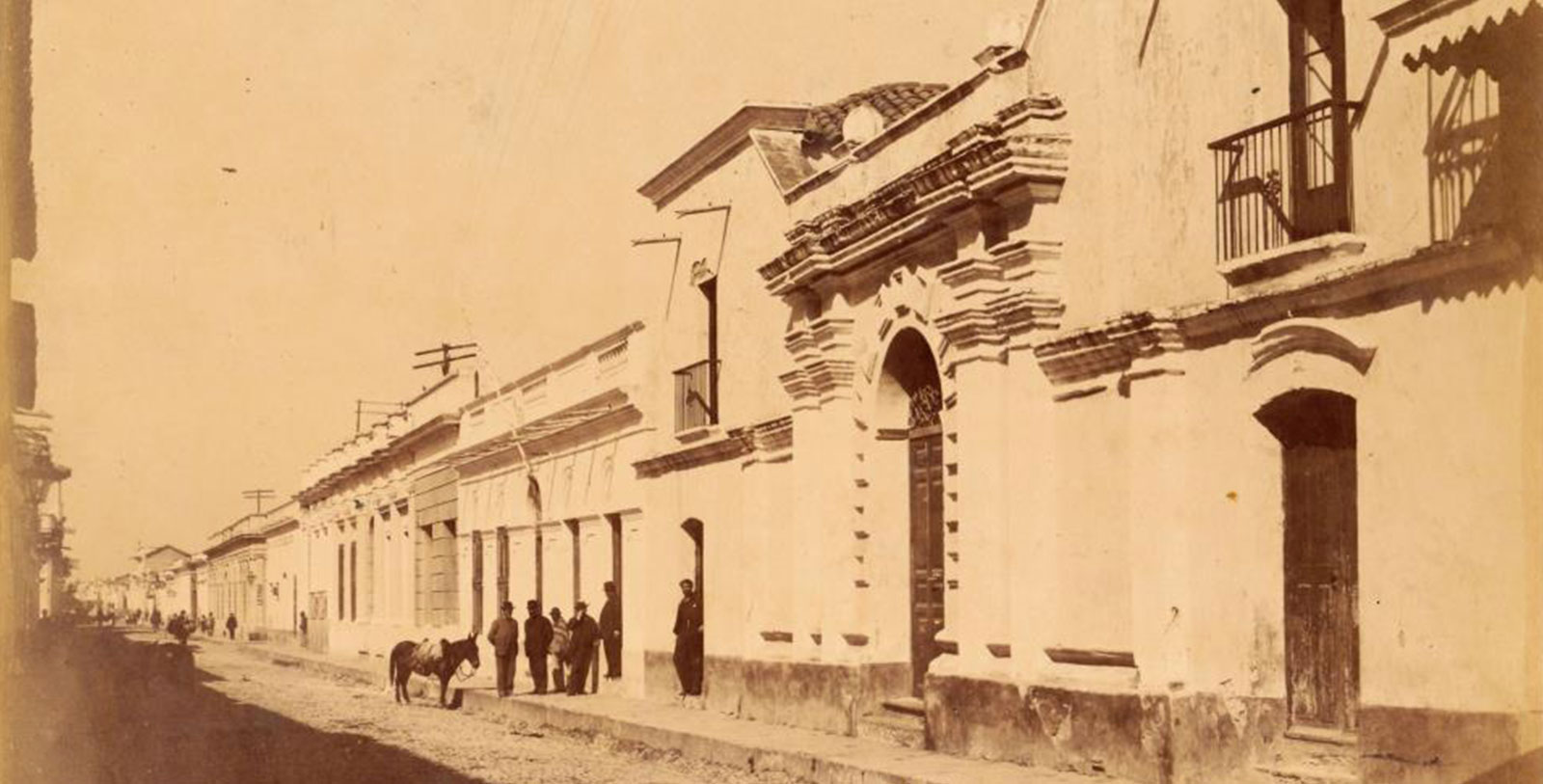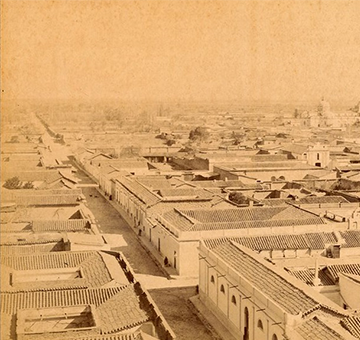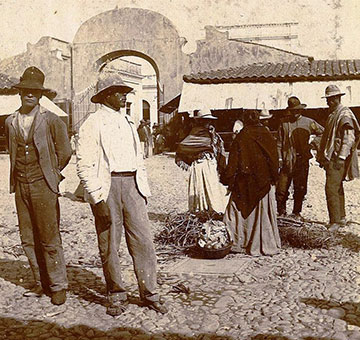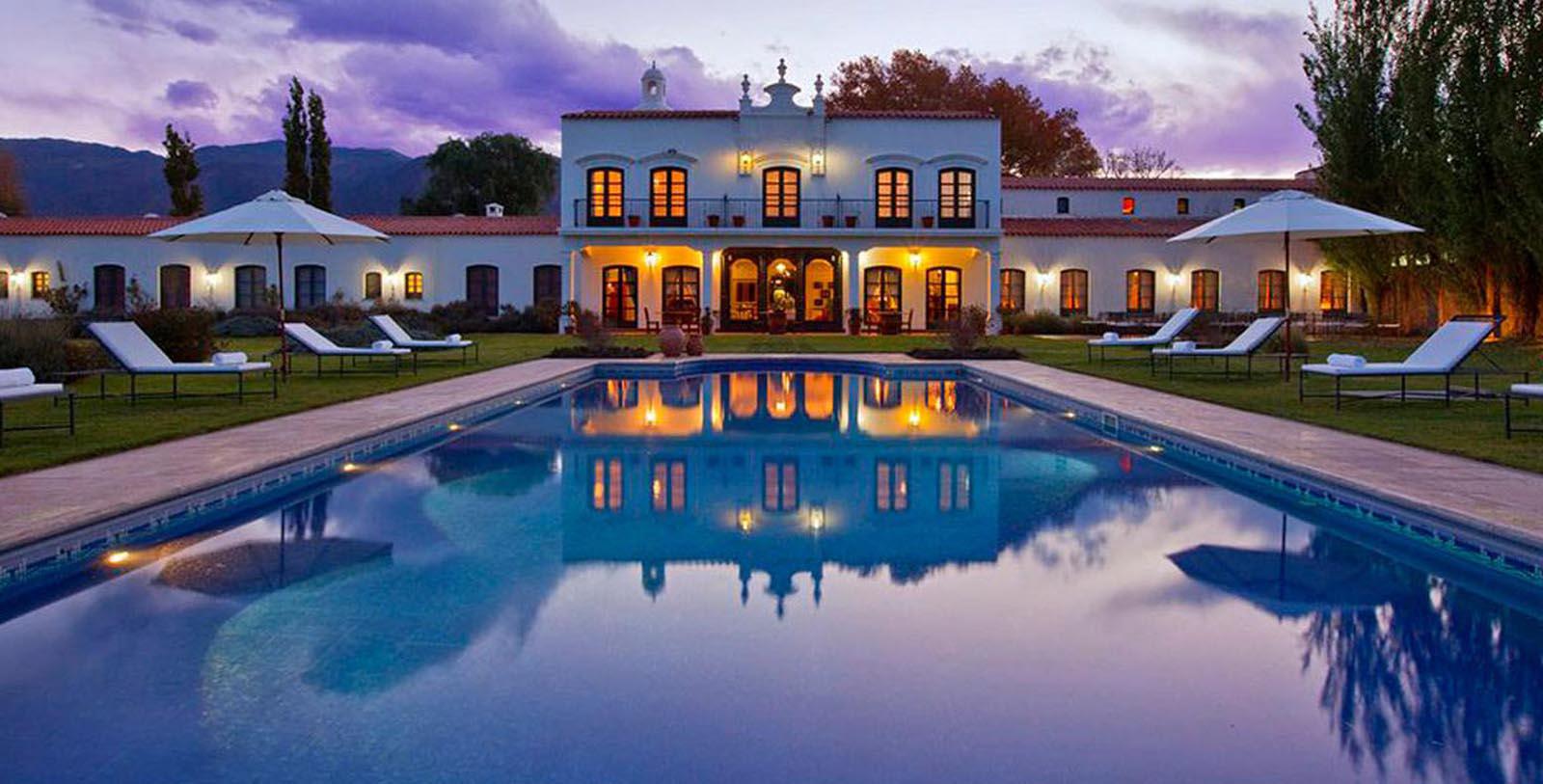Receive for Free - Discover & Explore eNewsletter monthly with advance notice of special offers, packages, and insider savings from 10% - 30% off Best Available Rates at selected hotels.
history
Discover the Patios de Cafayate, which was once an estate known as La Rosa that was founded in 1740.
Patios de Cafayate, a member of Historic Hotels Worldwide since 2014, dates back to 1740.
VIEW TIMELINEA member of Historic Hotels Worldwide since 2014, the Patios de Cafayate was constructed amid the intellectual and philosophical movement that dominated the world throughout the 18th century. Originally built and named “La Rosa” in 1740, Patios de Cafayate was utilized as a vast estate that resided next to a cattle ranch. La Rosa even became the site of a sprawling vineyard during the late 19th century, after the two French immigrants—David and Salvador Michel—acquired the facility in 1892. Alongside David’s wife Gabriela Torino, the brothers proceeded to plant many grapevines that eventually gave birth to a magnificent winery known as “El Esteco.”But it was not utilized as a hotel until two centuries later, when La Rosa reopened with just five rooms and finite resources. It specifically underwent the transformation in 1998, after a group of architects worked to restore portions of the estate that had been left dormant and desolate for many years prior. Their expert craftsmanship allowed for the construction of 32 additional rooms for La Rosa, while still maintaining the prized architectural characteristics that were so well-loved. Among the many architectural elements preserved amid the restoration were its walls crafted from adobe and the numerous majestic doorway entrances. The hotel was renamed as the “Patios de Cafayate” just one year later and allowed its visitors to delight in historic accommodations restored from centuries ago. The hotel's rebirth never deserted its initial elements of history, as its story lives on within its walls and in its spacious rooms. The original chapel that resided within the estate still remains today, with intricate details crafted in the city of Peruvian city of Cusco. Original artworks reside on the walls dreamed up by local artists, too, and handwoven upholstery graces its interior. With its original identity never amiss, the hotel has grown and changed over the years. Nevertheless, its ownership and stewards have never allowed its visitors to forget its beautiful story of creation and everlasting existence. Come experience the Patios de Cafayate’s wonderful heritage first-hand today.
-
About the Location +
Located at the foot of the Andes in the breathtaking Calchaquí Valleys, the town of Cafayate has a rich history that goes back centuries. Indeed, the first known people to inhabit the region were the Diaguitas and Calchaquíes, native tribes that once lived throughout the area in large numbers. They specifically occupied numerous villages, the greatest of which was a settlement known as “Tolombón” (which still exists today). Over time, though, the influence of the Incas in present-day Peru eventually reached the isolated Diaguitas and Calchaquíes toward the end of the 15th century. But the Incas’ dominion over the area proved to be fairly short-lived with the arrival of the first Spanish conquistadors nearly five decades later. Now a part of the burgeoning Spanish Empire in the Americas, the region soon became one of the many destinations in which colonists from Spain chose to resettle. Several new communities quickly emerged across the area, including such prominent cities like the bustling metropolis of Salta. But the site of modern Cafayate remained sparsely populated for years, save for a few influential families who operated isolated farms. Seeking a way to provide a source of dedicated services to those individuals, a mayor from Salta—Manuel Fernando de Aramburu—decided to create a town. In 1840, he specifically donated the land upon which to found Cafayate, which interestingly was centered around the foundation of a historic mission complex. Despite the presence of Cafayate, the region nonetheless maintained its pastoral, agrarian atmosphere for many decades thereafter. This local agricultural activity gradually gave rise to a robust viticulture industry that subsequently produced a number of amateur wineries. While most of the vineyards established at the time ultimately disappeared, their early successes inspired later generations to open newer, more permanent wineries. In fact, the surrounding countryside had emerged as one of the world’s preeminent wine-growing capitals by the late 19th century. The region still maintains its rich viticultural identity today, as it is home to a number of exclusive blends ranging from unique Cabernets to special Torrontés. Cafayate itself has emerged as a major tourist destination in recent years, too. In addition to its relationship to the Argentinian wine industry, Cafayate has also entertained an internationally famous folklore festival since the 1970s. Few places in all of Argentina can claim such a rich heritage than the bustling village of Cafayate and the surrounding Calchaquí Valleys.
-
About the Architecture +
Originally developed as a vast manor house connected to a sprawling ranch, the Patios de Cafayate stands today as an amazing example of Spanish Colonial architecture. Spanish colonial design aesthetics harken back centuries and is one of the most prolific design aesthetics seen throughout the Americas today. The form itself emerged when the first generations of Spanish colonists began arriving from Europe at the start of the 16th century. Seeking to establish similar settlements to the ones found in their native Spain, the pioneers began to essentially recreate European cities across Mexico. Many of the earliest settlers crafted buildings that combined elements of architectural motifs popular in Spain at the time, including Renaissance, Moorish, and Byzantine forms. Over time, though, those beautiful and extravagant styles were complimented by other, newer forms, such as Neoclassical and Baroque architecture. The amalgamation of all those unique styles eventually produced structures that were incredibly decorative and ornate. But despite the variety in their appearance, they mostly shared the same general layout and qualities. For instance, the buildings typically featured a central courtyard, as well as thick stucco walls that could endure diverse climate of both North and South America. Among the other recognizable features that they possessed included heavy carved doors, spiraled columns, and gabled red-tile roofs, as well. This new stunning architectural form soon defined the landscape of countless Spanish cities in the “New World.” Many of those buildings still survive to this day, too, with some even preserved as recognized UNESCO World Heritage Sites.































